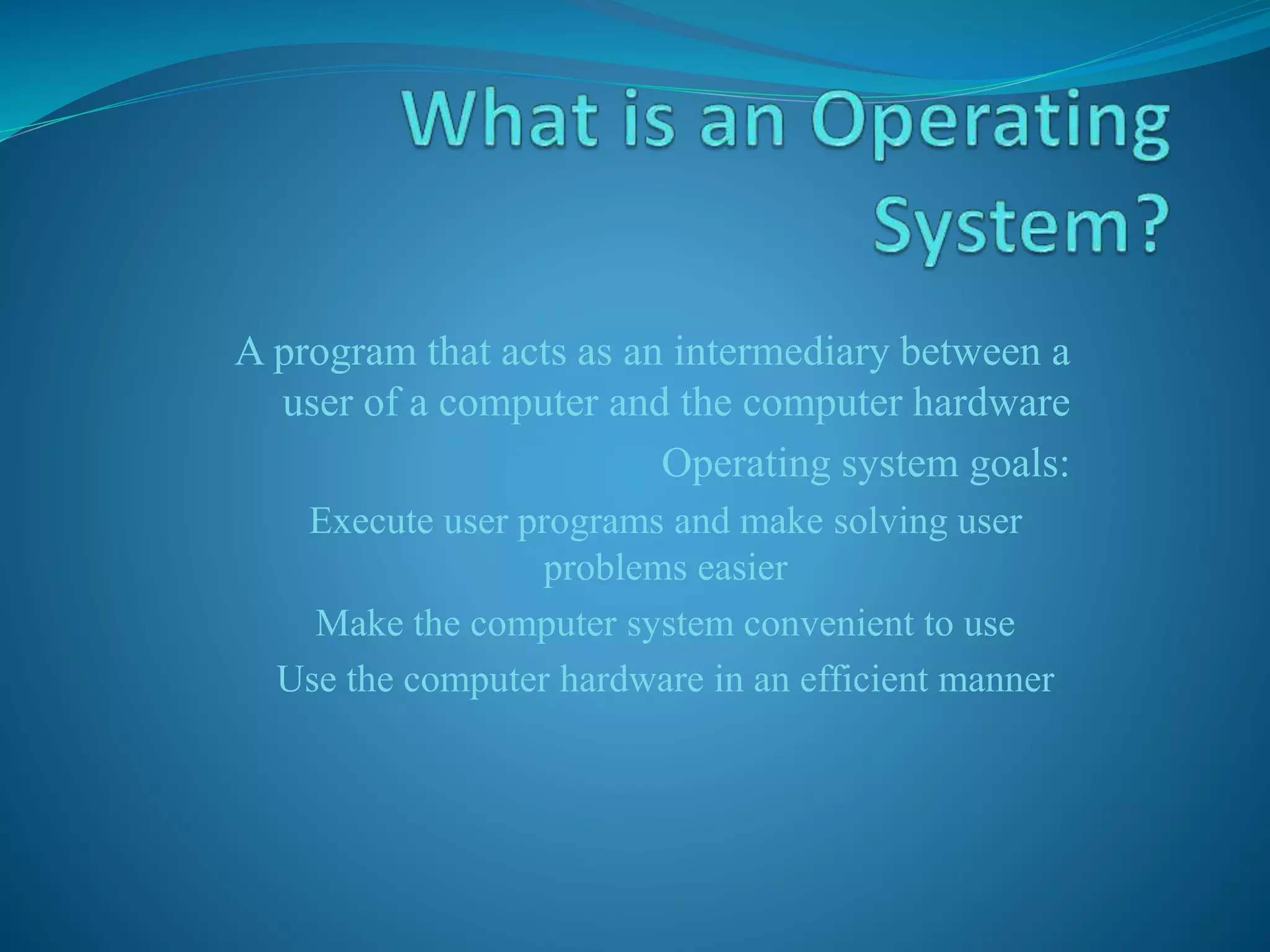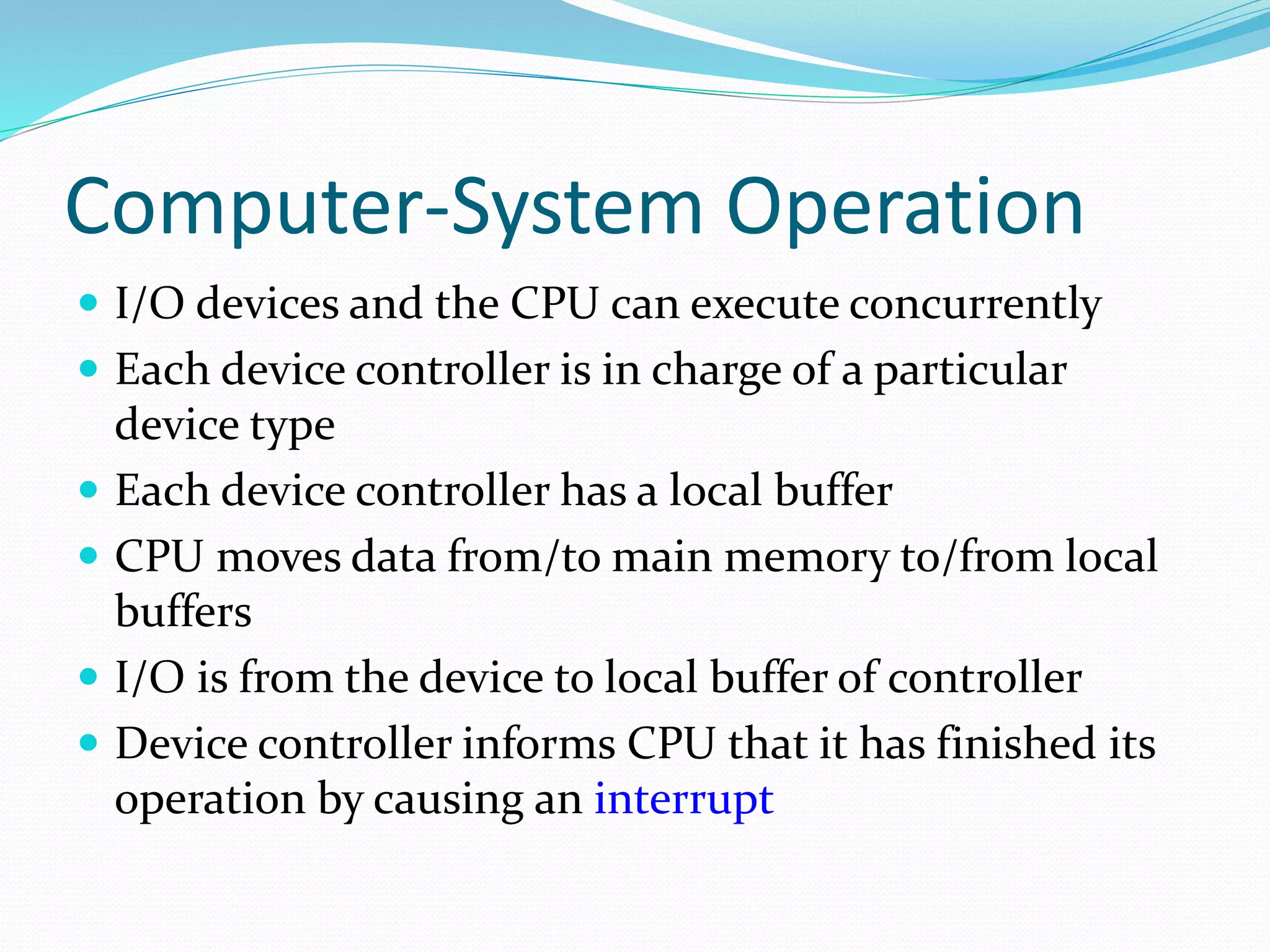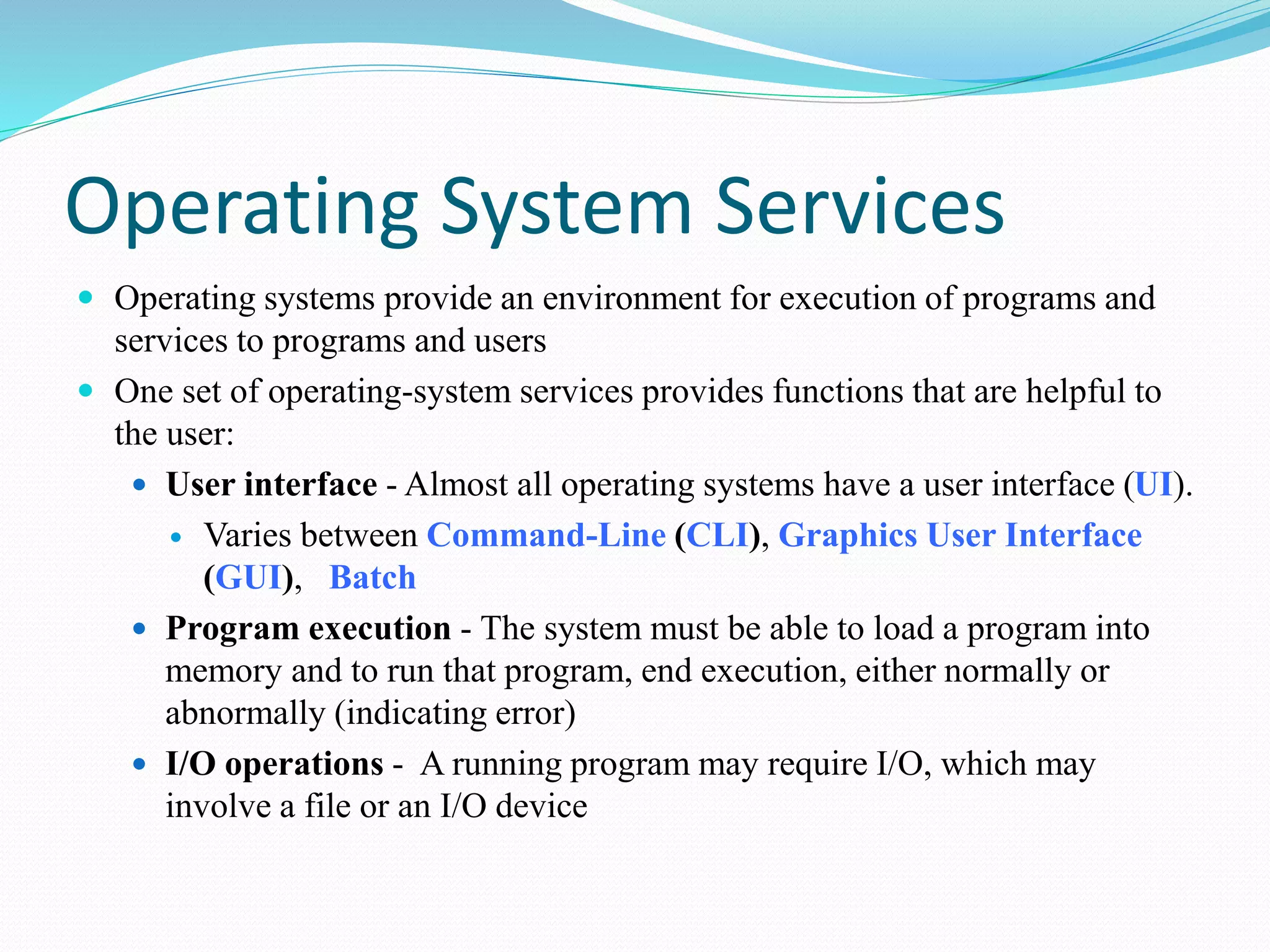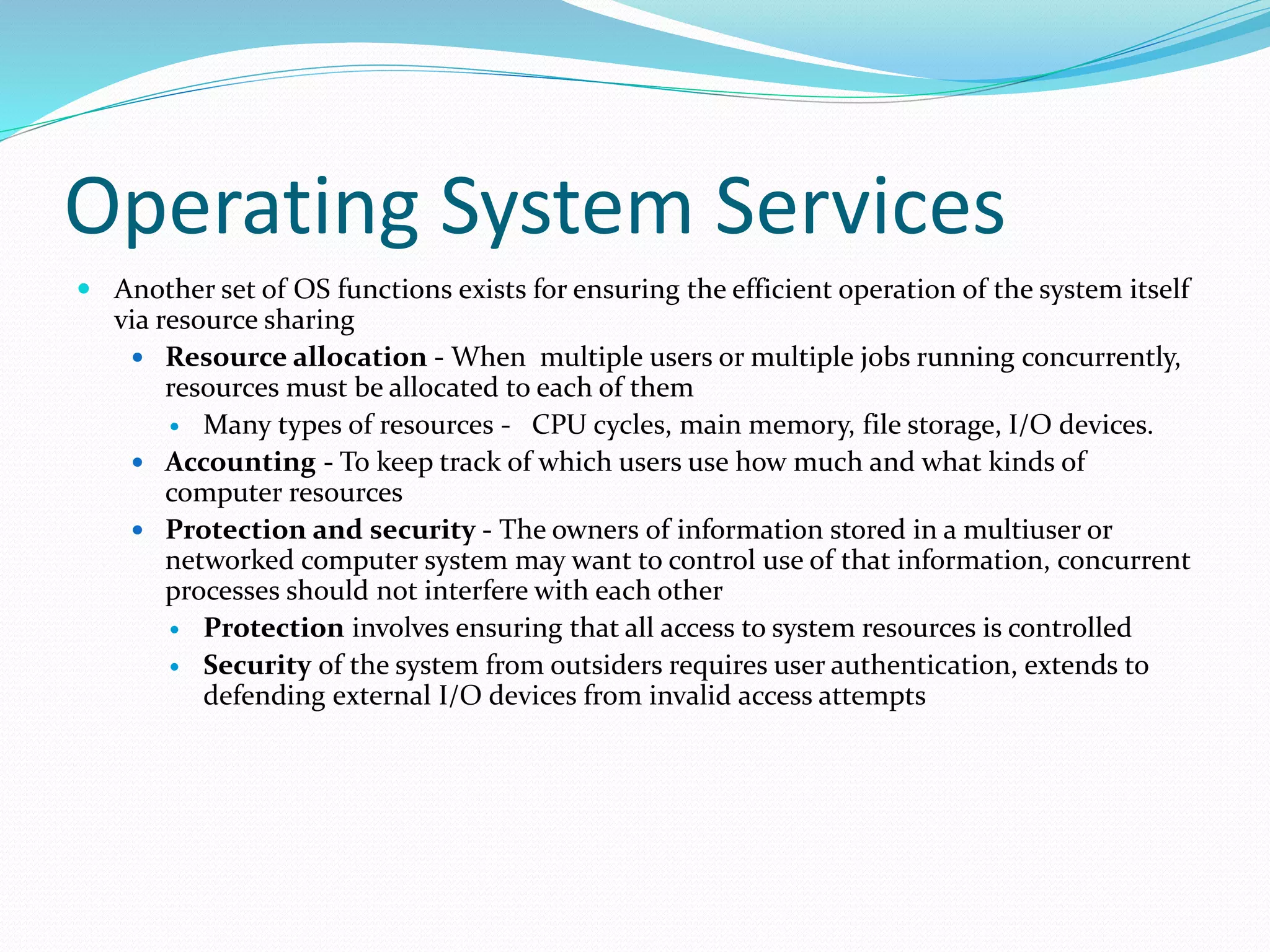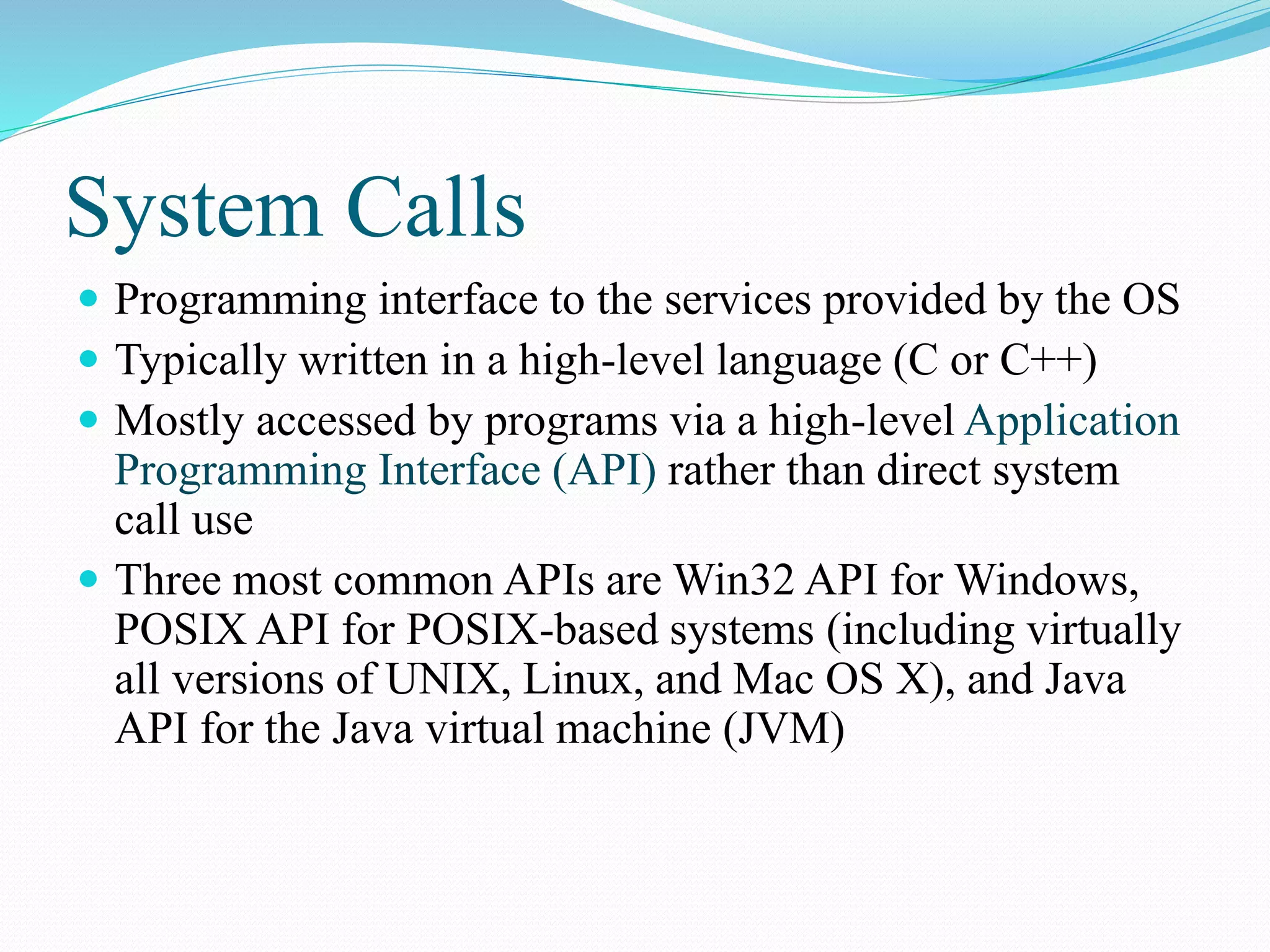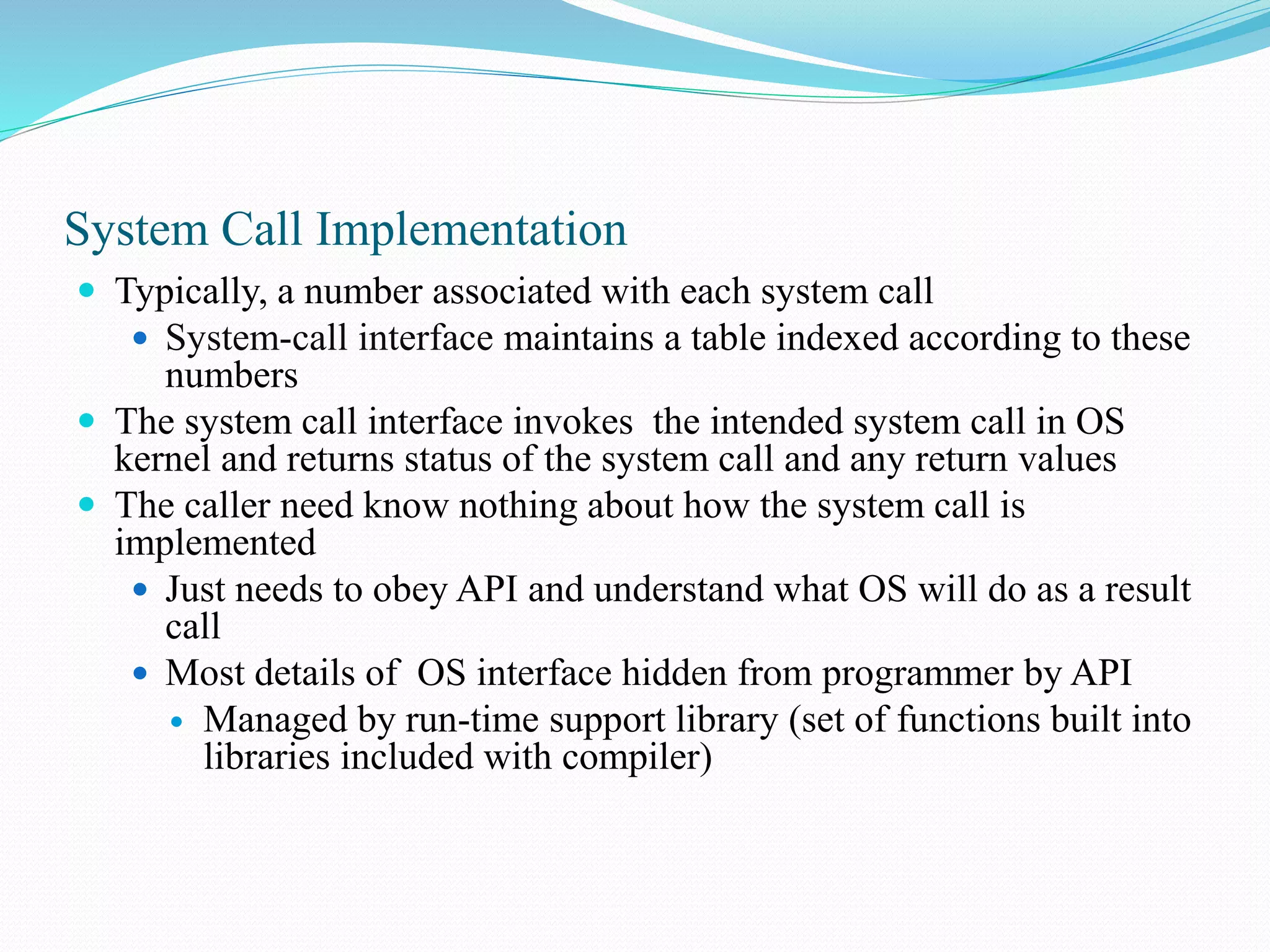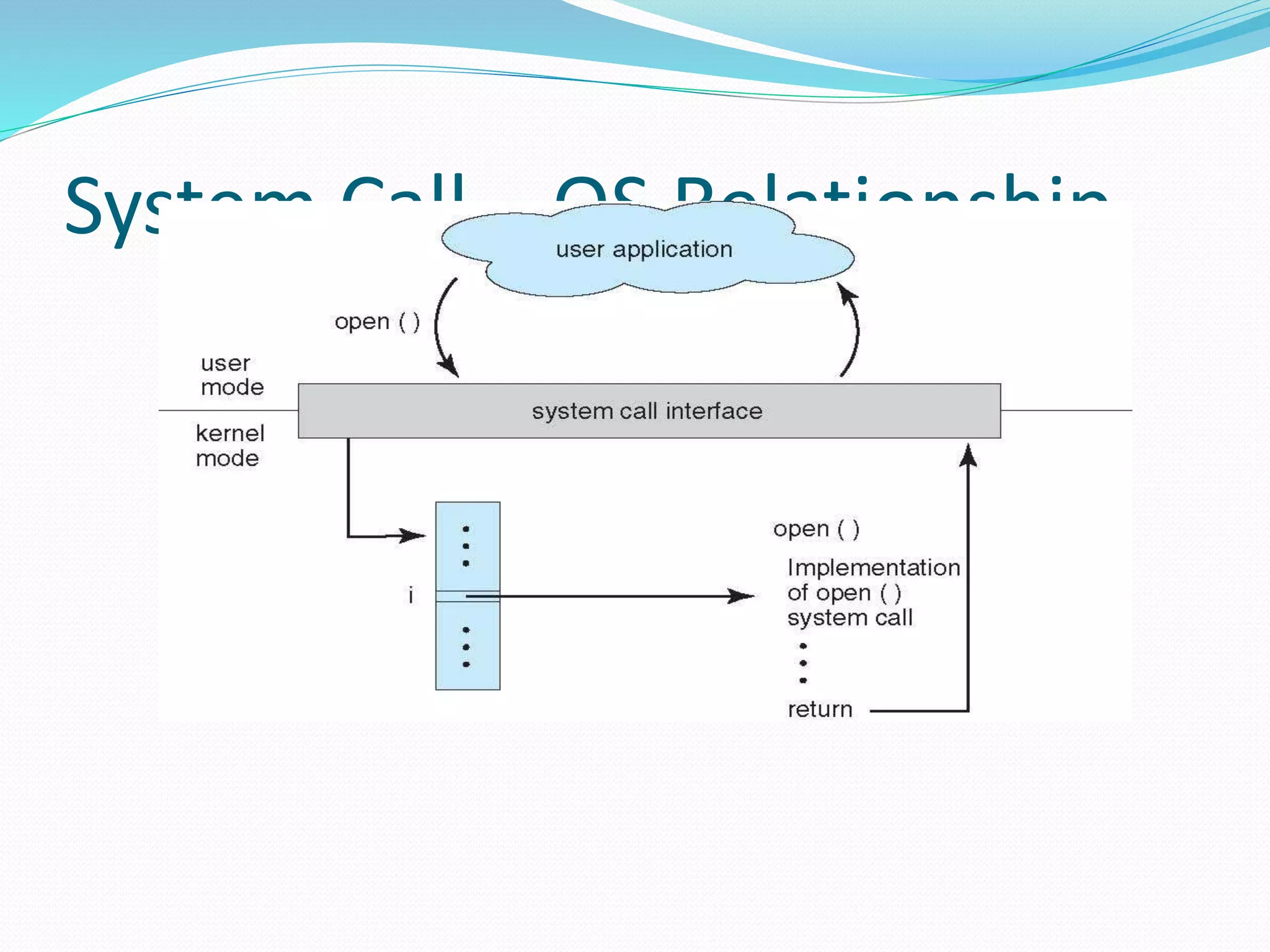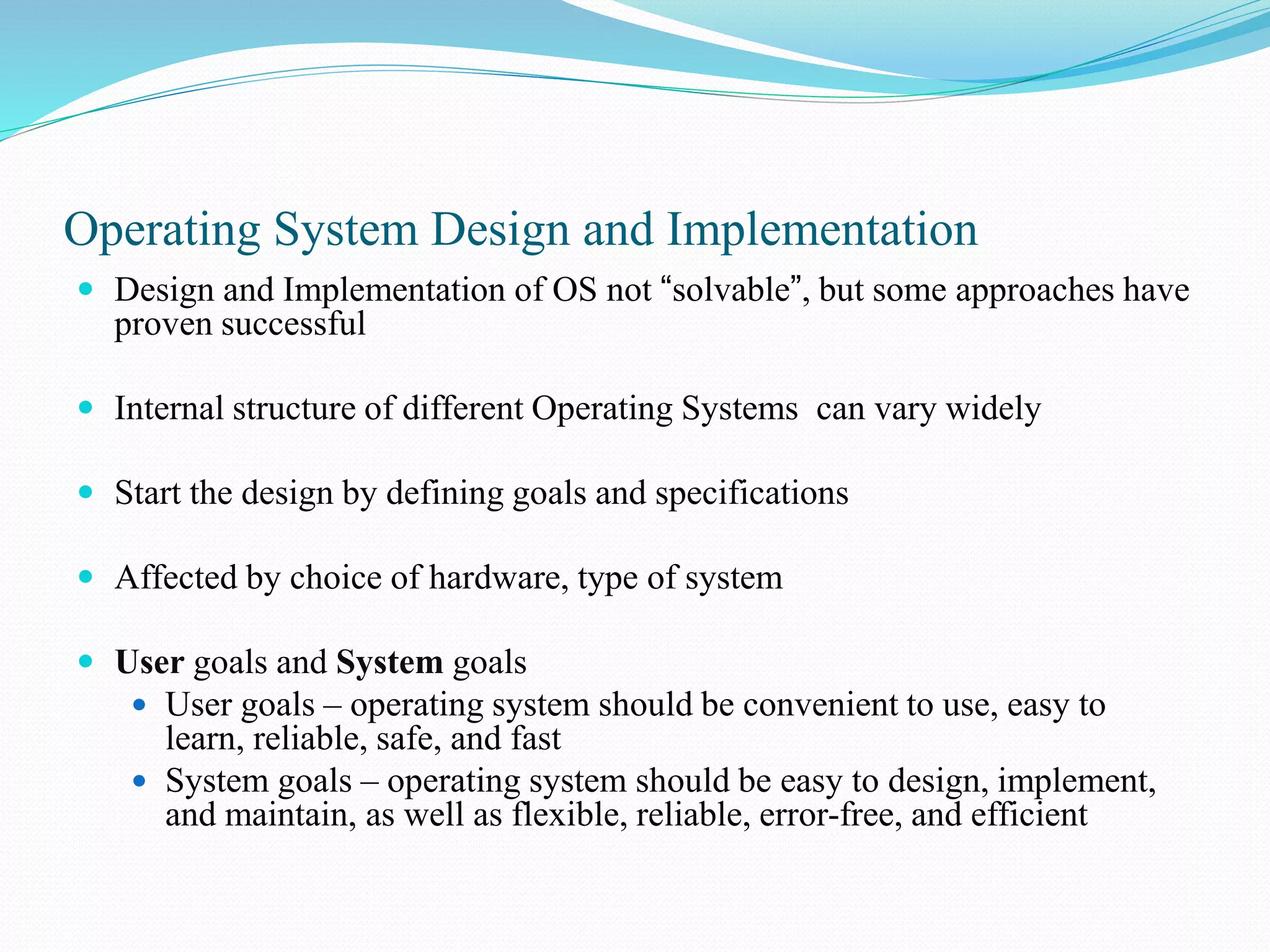This document provides an overview of operating system concepts including:
- Operating systems act as an intermediary between the user and computer hardware. They execute programs, allocate resources, and provide interfaces.
- Key components include processes, memory management, CPU scheduling, I/O management, and file systems.
- Operating systems provide services through system calls and programs that execute programs, manage files and devices, perform resource allocation, and more.
- Design considerations involve separating policies from mechanisms, specifying goals, and implementing in an efficient manner across different hardware.


